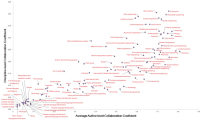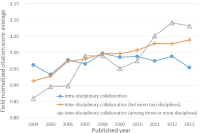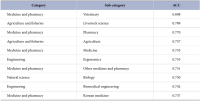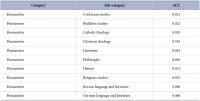ISSN : 2287-9099
Vol.6 No.1
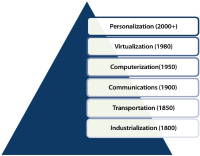
Abstract
This paper confers about the implementation of Knowledge Management (KM) in the National Library of Bangladesh (NLB). The main aim of this study was to investigate how the NLB goes about creating, implementing, disseminating, and applying knowledge within the organization. The other objectives of this paper were to identify the current status of KM in NLB and the understanding of different facets of KM by the staff of the National Library. The paper revealed that the situation of KM in NLB is not satisfactory. The paper also described the fact that the working environment supports the implementation but there needs to be some changes in the policies. Finally the research disclosed that NLB is a great place for implementing KM and has a large amount of possibilities for the adoption of KM. This qualitative research used the questionnaire as the main instrument for data collection. Finally, data has been processed and analyzed using SPSS and MS Excel.



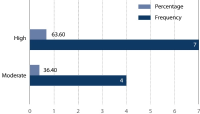







Abstract
Interest in open data is continuing to grow around the world. In particular, open government data are considered an important element in securing government transparency and creating new industrial values. The South Korean government has enacted legislation on opening public data and provided diversified policy and technical sup-port. However, there are also limitations to effectively utilizing open data in various areas. This paper introduces an administrative district knowledge model to improve the sharing and utilization of open government data, where the data are semantically linked to generate a knowledge graph that connects various data based on administrative districts. The administrative district knowledge model semantically models the legal definition of administrative districts in South Korea, and the administrative district knowledge graph is linked to data that can serve as an administrative basis, such as addresses and postal codes, for potential use in hospitals, schools, and traffic control.

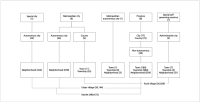
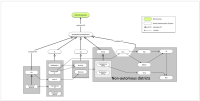
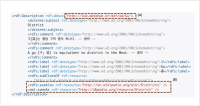
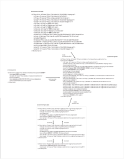
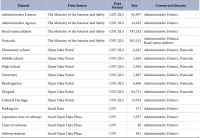

Abstract
Purpose: This study aims to examine the research output in the field of nursing at the global level during the last two decades, viz., for the period 1996-2015, with special reference to India. Some of the aspects examined include the research growth in nursing literature during the period of study, leading nursing research countries at the regional and global level, and citation analysis. Scope and Methodology: This study is global in nature, but emphasis has also been laid on India’s research contribution in nursing at the global level. Aspects like regional contribution to the nursing research output have also been assessed. This study is purely based on secondary data retrieved from SCImago Journal and Country Rankings. The figures in the study are based on one particular database and are not exhaustive; hence they simply reflect a trend in nursing research at the global level. Findings: During the period 1996 through 2015, a total of 550,490 research articles were published across the world by 212 nation states at an average of 2,596 articles from each individual country. On average, during the period of study, the number of nursing research publications grew at the rate of 7.36% each year. North America has emerged as one of the leading nursing research continents of the world by publishing 218,614 research articles, constituting 39.71% of the global nursing research output. The U.S. and U.K. are the world’s two leading nursing research countries, which contributed 193,819 and 61,730 research articles respectively, comprising a 35.21% and 11.21% share of global nursing research output. India and China, apart from being the two fastest growing nursing research countries, have the potential to meet the global human resource demand in the field of nursing, given the skilled and trained human resource both these countries possess in nursing. Social Implication: There is always a need to share working knowledge in some professions and nursing is one of them. There cannot be a better medium than linking practice with theory through the research medium. Metric studies in turn help to get a better idea about the amount of work done in any given field at the national and international level, thus identifying the need thereof to improve upon those areas where there is research lag.



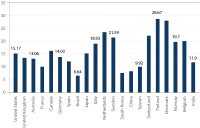
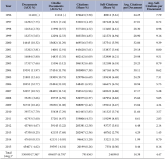


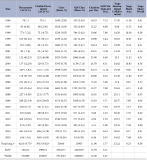
Abstract
The global information economy is transforming the way people connect with each other, learn new things, and contribute to the knowledge society. With the online platform, library services have also expanded beyond face to face interaction. Although studies of virtual reference services have been made in different parts of the world, a case study discussing various forms of online reference engagement in Kazakhstan has not been written. While most of the theories on connectivism emphasize the context of instruction, the researchers of this paper discussed the tenets as they relate to online engagement. Applying the theory of connectivism, this paper explores through a mixed method the use of various online platforms to enhance engagement connecting library users to information. Findings revealed that differences in patterns of interactions as to platforms, types of queries, and users reveal that students, faculty, and other members of the academic community served by the library have various preferences for communication. The case study further showed that respondents have not maximized the use of VLS but interest in using both synchronous and asynchronous services is clear. Finding connections between sources of information, creating useful information patterns, is essential in learning. Amplifying awareness on the use of VLS giving emphasis to the unique features of each service is useful in order to enable students to see how this platform facilitates learning.

Abstract
Purpose This research aims to examine collaboration from a disciplinary perspective in Korea. There are needs to explore to what extent researchers collaborate by discipline and across discipline along with the impact of collaboration. Design/methodology/approach - In order to investigate collaboration with respect to entire discipline areas and author-declared discipline information we analyzed a national researcher information database (Korean Researcher Information) with a citation index database (Korean Citation Index) covering the entire range of discipline. This study analyzed the data sets for 10 years (2004-2013) including a total of 8 categories and 119 sub-categories of disciplines, 109,551 researchers, 650,263 articles, and 1,170,039 citations in Korea. Findings The results demonstrate that there are different intensities of collaboration from heavy to minimal across disciplines. In examining collaboration in terms of author and discipline levels, the results show that collaboration in author level rises, then inter-disciplinary collaboration increases accordingly, in most of the 119 discipline sub-categories. A number of disciplines, however, tended to collaborate more intensely within their ownrather than with other disciplines. Moreover, the impact of collaboration tended to change over time depending on the types of collaboration. Specifically, inter-disciplinary collaboration was likely to have more immediate impact as pioneer research, especially among more than three disciplines, whereas the impact of intra-disciplinary collaboration is higher as time passes. Originality/value In this research, a disciplinary investigation on collaboration is conducted for the entire range of disciplines in Korea. Through analyzing distinctive author-declared discipline information from the KRI, this research examines the intensities of collaboration across disciplines, collaboration in author level, and the impact of collaboration.





